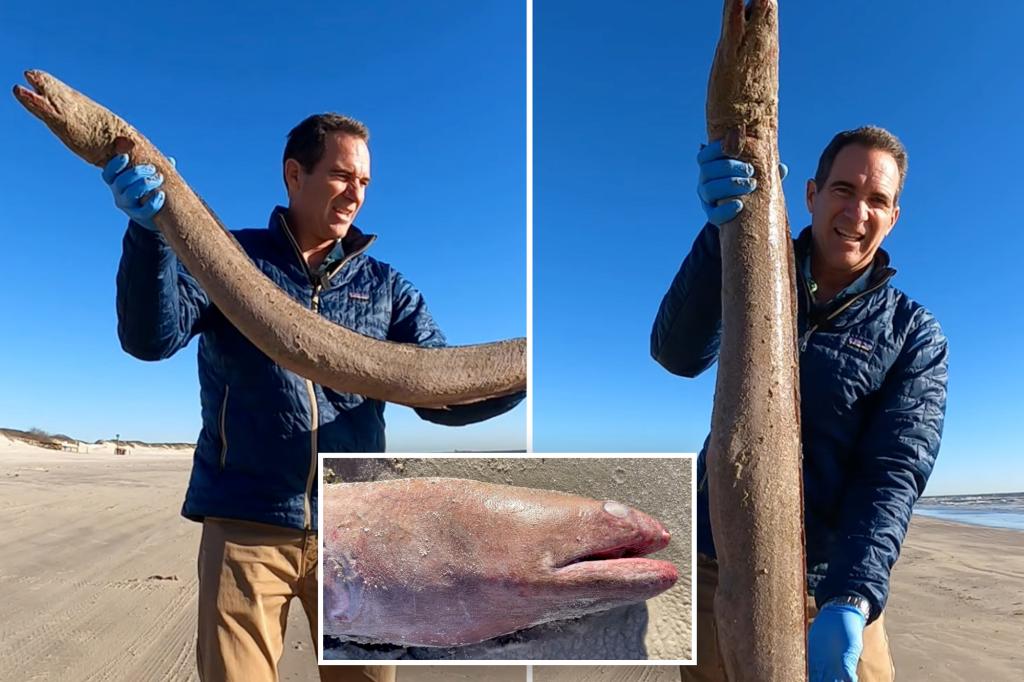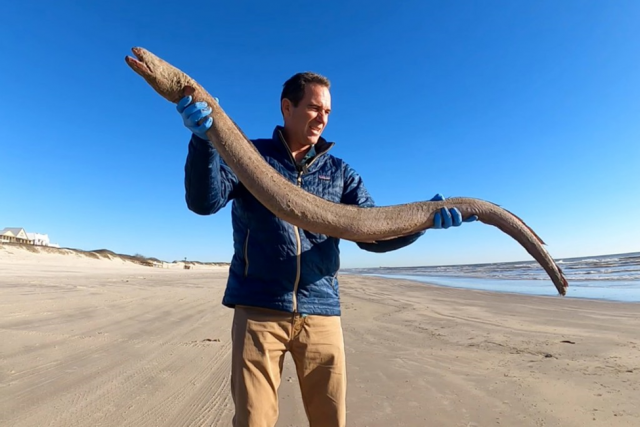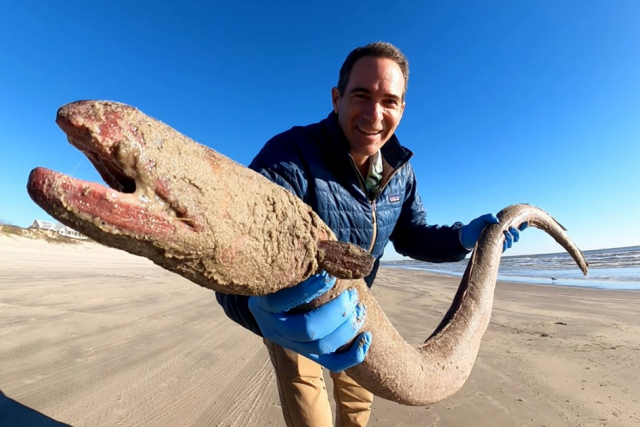American eels at Fish Story
- Thread starter thebiggerthebetter
- Start date
Wow the American Eels look great. Also that mix of fish is insane in a good way lol.Our first ever:
They look great. I would be stuffing the gaps with filter wool and adding a few pipes for them to hide in (so I could still see them) so they were content not to look for ways out. Never come across these over here.
Ive had the opportunity to keep some very nice eels over the years. But alas, once i unhooked them they would always head straight to the grill. Fresh teriyaki eel is heaven on earth.
Those are some nice specimens there, will be interesting to watch them grow. I dont know anything about keeping anguilla but wont they eventually try to make a jailbreak for the bermuda triangle?
Those are some nice specimens there, will be interesting to watch them grow. I dont know anything about keeping anguilla but wont they eventually try to make a jailbreak for the bermuda triangle?
Nice eels. A quick summary of the American eel life cycle: adults spawn, then die, in the Sargasso Sea during the winter, larval eels float in the ocean and eventually get caught in the ocean currents and are deposited near shore from Greenland to S. America, most enter freshwater where they will live and grow until mature, then return to the Sargasso to complete the cycle. It's more complex than what I have written, but you get the idea.
Reason why I mention this is 2 of your eels appear to be in the "silver" stage, which are mature eels headed back to the Sargasso. In your cooler, 2 of the eels have a blueish/ grey color whereas the other 3 are the typical dark brown fading to yellow color. I can't see clear enough in your video, but there are a couple characteristics of silver stage eels which stand out- color, silver eels eyes enlarge, their lateral line turns black, and there is a distinct black edge to the rear of the dorsal fin which extends around the tip of their tail and along part of the anal fin. You will be able to see these better in person. Don't be surprised if those 2 do not eat, or eat very little. In the wild, silver eels stop eating just before they begin their journey to the Sargasso. Females (and maybe males too) absorb their digestive organs and use that energy for gamete production.
As you noted, there are multiple openings around the tank. Plug those up, and maybe put screens over the ends of the piping. If you think the openings are too small for an eel to get thorough, plug it anyway. You'd be surprised what an eel can get through.
Some caves or pvc pipe will give them some cover.
Look forward to updates.
Reason why I mention this is 2 of your eels appear to be in the "silver" stage, which are mature eels headed back to the Sargasso. In your cooler, 2 of the eels have a blueish/ grey color whereas the other 3 are the typical dark brown fading to yellow color. I can't see clear enough in your video, but there are a couple characteristics of silver stage eels which stand out- color, silver eels eyes enlarge, their lateral line turns black, and there is a distinct black edge to the rear of the dorsal fin which extends around the tip of their tail and along part of the anal fin. You will be able to see these better in person. Don't be surprised if those 2 do not eat, or eat very little. In the wild, silver eels stop eating just before they begin their journey to the Sargasso. Females (and maybe males too) absorb their digestive organs and use that energy for gamete production.
As you noted, there are multiple openings around the tank. Plug those up, and maybe put screens over the ends of the piping. If you think the openings are too small for an eel to get thorough, plug it anyway. You'd be surprised what an eel can get through.
Some caves or pvc pipe will give them some cover.
Look forward to updates.
Now that's a eel-dzilla. Max size Anguilla rostrata.

 nypost.com
nypost.com



‘Massive’ American eel washes up on Texas Gulf Coast
An American eel estimated to be 4-feet long was discovered on the Gulf Coast of Texas.


Conger eelNow that's a eel-dzilla. Max size Anguilla rostrata.

‘Massive’ American eel washes up on Texas Gulf Coast
An American eel estimated to be 4-feet long was discovered on the Gulf Coast of Texas.nypost.com
View attachment 1536570
View attachment 1536571
^yep. I was eyeing that eel suspiciously, doesnt look like any anguilla ive ever seen, but i will say that ive seen--and caught-- several anguilla rostrata approaching that size and girth. A 3' fat anguilla is enough fish to feed a family of 4.
Thank you guys! I thought the head and eyes looked different but assumed that maybe when they go back into the sea and migrate to spawn, their body heavily changes.
So you are saying this marine biologist and conservationist and the director of the University of Texas Mission-Aransas Reserve couldn't tell an American eel from Conger eel???
The article:
"A 4-foot long American eel — about as large as the endangered species can grow — was found washed up on the Gulf Coast of Texas.
The director of the University of Texas Mission-Aransas Reserve found the creature on the shoreline and posted his discovery in a Facebook video.
“This is like basically as big as they get,” said Jace Tunnell, who came upon the giant fish on Mustang Island in Nueces County. “This thing is massive.”
In the clip, the marine conservationist goes on to explain that eels are usually small and used as fishing bait, so this find was out of the ordinary. He also assumed it to be a female,
Photo caption: Jace Tunnell of the University of Texas Marine Institute is no stranger to creepy things washing ashore. Jace Tunnell, Reserve Director.
Photocaption: The American eel is listed as endangered. Jace Tunnell, Reserve Director.
The American eel is listed as endangered, which he said is due to the building of dams in the rivers that they inhabit. Whenever all the dams and stuff started coming in, the life cycle of these fish, of going up the rivers, coming down the rivers, and going way out in to the ocean to be able to have their eggs,” he said. “With those dams on the rivers, really, they weren’t able to do the things they normally do.”
Facebook users expressed their fears of the slimy, snake-like animal, with comments such as, “Nightmare time,” “Hope I don’t see one” and “Just think I used to swim in the Gulf!”
So you are saying this marine biologist and conservationist and the director of the University of Texas Mission-Aransas Reserve couldn't tell an American eel from Conger eel???
The article:
"A 4-foot long American eel — about as large as the endangered species can grow — was found washed up on the Gulf Coast of Texas.
The director of the University of Texas Mission-Aransas Reserve found the creature on the shoreline and posted his discovery in a Facebook video.
“This is like basically as big as they get,” said Jace Tunnell, who came upon the giant fish on Mustang Island in Nueces County. “This thing is massive.”
In the clip, the marine conservationist goes on to explain that eels are usually small and used as fishing bait, so this find was out of the ordinary. He also assumed it to be a female,
Photo caption: Jace Tunnell of the University of Texas Marine Institute is no stranger to creepy things washing ashore. Jace Tunnell, Reserve Director.
Photocaption: The American eel is listed as endangered. Jace Tunnell, Reserve Director.
The American eel is listed as endangered, which he said is due to the building of dams in the rivers that they inhabit. Whenever all the dams and stuff started coming in, the life cycle of these fish, of going up the rivers, coming down the rivers, and going way out in to the ocean to be able to have their eggs,” he said. “With those dams on the rivers, really, they weren’t able to do the things they normally do.”
Facebook users expressed their fears of the slimy, snake-like animal, with comments such as, “Nightmare time,” “Hope I don’t see one” and “Just think I used to swim in the Gulf!”
Yes, mistaken identity. I noticed a few things that didn't look right for an American eel.Thank you guys! I thought the head and eyes looked different but assumed that maybe when they go back into the sea and migrate to spawn, their body heavily changes.
So you are saying this marine biologist and conservationist and the director of the University of Texas Mission-Aransas Reserve couldn't tell an American eel from Conger eel???
The article:
"A 4-foot long American eel — about as large as the endangered species can grow — was found washed up on the Gulf Coast of Texas.
The director of the University of Texas Mission-Aransas Reserve found the creature on the shoreline and posted his discovery in a Facebook video.
“This is like basically as big as they get,” said Jace Tunnell, who came upon the giant fish on Mustang Island in Nueces County. “This thing is massive.”
In the clip, the marine conservationist goes on to explain that eels are usually small and used as fishing bait, so this find was out of the ordinary. He also assumed it to be a female,
Photo caption: Jace Tunnell of the University of Texas Marine Institute is no stranger to creepy things washing ashore. Jace Tunnell, Reserve Director.
Photocaption: The American eel is listed as endangered. Jace Tunnell, Reserve Director.
The American eel is listed as endangered, which he said is due to the building of dams in the rivers that they inhabit. Whenever all the dams and stuff started coming in, the life cycle of these fish, of going up the rivers, coming down the rivers, and going way out in to the ocean to be able to have their eggs,” he said. “With those dams on the rivers, really, they weren’t able to do the things they normally do.”
Facebook users expressed their fears of the slimy, snake-like animal, with comments such as, “Nightmare time,” “Hope I don’t see one” and “Just think I used to swim in the Gulf!”
1). Location of the eye. With American eels, the corner of the mouth extends just beyond the rear edge of the eye. Mouth extends further back in Conger eels.
2) Insertion of the dorsal fin. Closer to the head on Conger eels, further back on American eels.
3). Distance between the insertion of the dorsal and insertion of the anal fin is less in American eels.
4). I would be really surprised to see an American eel that size in Texas. Northern latitudes typically grow larger females.
Technically they aren't an endangered species (not yet at least) although their numbers are down. There was an effort a couple years ago to list the American eel as endangered but it didn't pass.
Last edited:










